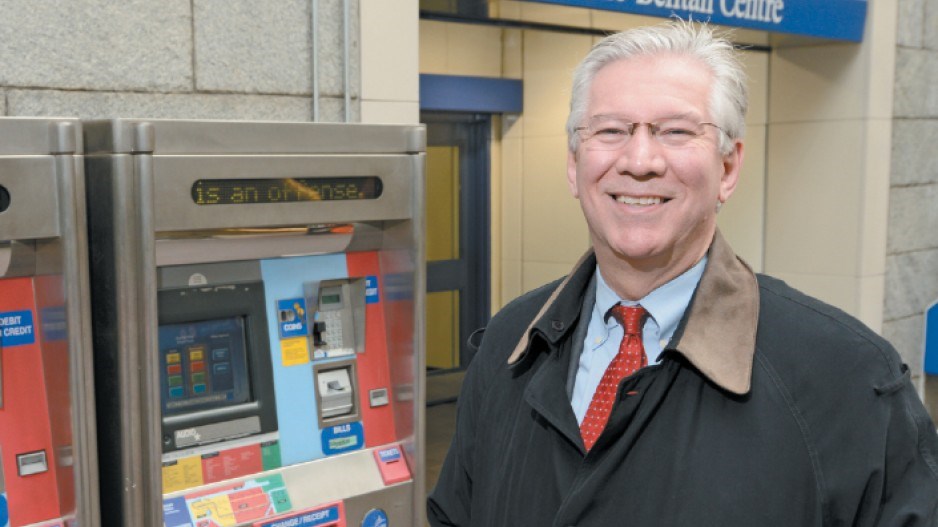TransLink officials are touting their willingness to be innovative in generating non-fare revenue.
The enterprising attitude comes with the transit operator virtually maxed out on how much it can collect from parking taxes, fares and property taxes and with a referendum expected sometime next year on whether to expand public funding.
"We are absolutely open for business," TransLink COO Doug Kelsey told Business in Vancouver.
TransLink generated $695,927 in revenue from retailers in 2012, or nearly 25% more than 2011's $558,070.
That's a tiny fragment of the nearly $498 million that it expects to bring in from transit fares in 2013, and Kelsey expects retail revenue to fluctuate between $500,000 and $1 million in the short term. But he said that five years from now, retail revenue could be several million dollars.
Some of that extra retail revenue would come from the $37 million redevelopment of Metrotown station, where there currently is no retail on TransLink property.
"Construction could start in the latter part of next year," Kelsey said.
The work must be completed by 2016 or the federal government's promise to contribute to the project will expire.
Critics such as Geller Group real estate consultant Michael Geller have lambasted TransLink for not being proactive about buying properties near future transit stations and instead allowing developers to realize property price gains.
But Kelsey said the provincial government is in charge of building new transit lines, like the Evergreen Line, and determining where stations go. It turns over the line to TransLink once it is complete, he said.
Money would then be expected to come from developers who build projects around the new stations just as it did when Degelder Group built Plaza 88 around New Westminster station and PCI Group negotiated to build Marine Gateway at Marine Drive station.
In both of those projects, TransLink granted developers access to its stations with entry points to connect with nearby retail and residential projects.
"[Adjacent retail] is not our property, but we said, 'If you want access to our distribution channel and the benefit of giving your customers benefits, then we want an economic benefit too," Kelsey said.
He would not reveal financial details of the agreements.
Mayors tend to be onside with these arrangements because the projects also provide a community benefit.
Surrey mayor Dianne Watts has urged TransLink to be more proactive about opening retail stores or leasing space at TransLink property around transit stations.
And New Westminster mayor Wayne Wright is solidly behind making his community's five stations as connected as possible with retail, services and residential density. He told BIV that the transformation in New Westminster is the most radical redevelopment of a station that has ever taken place.
Degelder built three residential towers and 194,000 square feet of leasable commercial space on a five-acre site around New Westminster station, which was formerly a hub for drug dealing and crime.
Last year, when the project was largely complete, Degelder sold the retail space to First Capital Realty (TSX:FCR) for $100 million.
Braid is the next major New Westminster SkyTrain station to see redevelopment, and Wright is in discussions with Bentall Kennedy about a potential first phase of redevelopment on a 30-acre site that would have 392,000 square feet in two largely commercial low-rise buildings.
Future redevelopment could also be in the cards around 22nd Avenue station, which currently has no retail.




